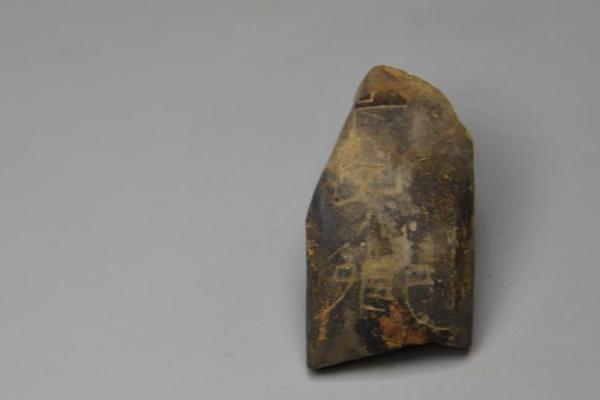
Use the control panel to set administrator permissions: click the start menu and select the control panel. In the control panel, find the user account and click it. Choose to change the account type and change the account type to administrator.
Press the win key + R key at the same time, and enter cmd to return. Enter: net localgroup Administrators in the command prompt window and return to confirm that there is only one Administrator account under the member before the follow-up operation can be carried out.
Enter "gpedit.msc" in the "Search web and windows" input box of the taskbar at the bottom right, and the computer will search by itself. After the search, click the mouse to open it.2. Open the local group policy manager.

Open the group policy editor, select the [Computer Configuration]/[Windows Settings]/[Security Settings]/[Local Policy]/[User Rights Assignment] option in turn, double-click the [Reject to access this computer from the network] policy, and delete the "Guest" account.
Open the "Run" window, enter "gpedit.msc" and click the "OK" button to open the "Group Policy Edit" window.
In order to control computer permissions more accurately and improve system security, we can carry out some advanced settings. A common method is to use the access control list (ACL) to manage the permissions of files and folders. We can choose specific files or folders and set who can access, modify or delete them.
First of all, in the computer, right-click the folder that needs to be set and select the properties, as shown in the figure below. Then click Security in the properties, as shown in the figure below. Then, in the open security page, click Advanced, as shown in the figure below.
1. Press the win key + R key at the same time, and enter cmd to enter. Enter: net localgroup Administrators in the command prompt window and return to confirm that there is only one Administrator account under the member before the follow-up operation can be carried out.
2. Open the "Settings" of the start menu on the win system computer; click the privacy option in the settings panel, click the account information option in the left sidebar, and click the open button under Allow the application to access your account information to set the permission.
3. Select the current user and click the change permission button below to change the permission. 2) Check the permissions to be obtained and click OK.Step 5, edit the administrator's system permissions. 1) After right-clicking on the properties, click the security option, select the administrator user you are currently using, and click the edit button to enter the editing interface.
4. Click the Apple icon on Mac computer. This is the Apple logo in the upper left corner of the menu bar. Click on System Preferences. Click the "Security and Privacy" icon. The shape of the icon is like a house. Click on Privacy. Click the service in the left pane.
1. First, click the windows icon in the lower left corner of the computer desktop, and click the avatar on the right in the pop-up options to enter. Just enter the interface of the user account and click to manage other accounts in it. Then select the account that needs to be set in the management account.
2. Usually, in the operating system, permission settings can be configured through "Control Panel", "User Account and Home Security", "Security Center" and other related settings.
3. Open the "Run" window, enter "gpedit.msc" and click the "OK" button to open the "Group Policy Edit" window.
4. First, in the computer, right-click the folder that needs to be set, and select the properties to enter, as shown in the figure below. Then click Security in the properties, as shown in the figure below. Then, in the open security page, click Advanced, as shown in the figure below.
OKX app-APP, download it now, new users will receive a novice gift pack.
Use the control panel to set administrator permissions: click the start menu and select the control panel. In the control panel, find the user account and click it. Choose to change the account type and change the account type to administrator.
Press the win key + R key at the same time, and enter cmd to return. Enter: net localgroup Administrators in the command prompt window and return to confirm that there is only one Administrator account under the member before the follow-up operation can be carried out.
Enter "gpedit.msc" in the "Search web and windows" input box of the taskbar at the bottom right, and the computer will search by itself. After the search, click the mouse to open it.2. Open the local group policy manager.

Open the group policy editor, select the [Computer Configuration]/[Windows Settings]/[Security Settings]/[Local Policy]/[User Rights Assignment] option in turn, double-click the [Reject to access this computer from the network] policy, and delete the "Guest" account.
Open the "Run" window, enter "gpedit.msc" and click the "OK" button to open the "Group Policy Edit" window.
In order to control computer permissions more accurately and improve system security, we can carry out some advanced settings. A common method is to use the access control list (ACL) to manage the permissions of files and folders. We can choose specific files or folders and set who can access, modify or delete them.
First of all, in the computer, right-click the folder that needs to be set and select the properties, as shown in the figure below. Then click Security in the properties, as shown in the figure below. Then, in the open security page, click Advanced, as shown in the figure below.
1. Press the win key + R key at the same time, and enter cmd to enter. Enter: net localgroup Administrators in the command prompt window and return to confirm that there is only one Administrator account under the member before the follow-up operation can be carried out.
2. Open the "Settings" of the start menu on the win system computer; click the privacy option in the settings panel, click the account information option in the left sidebar, and click the open button under Allow the application to access your account information to set the permission.
3. Select the current user and click the change permission button below to change the permission. 2) Check the permissions to be obtained and click OK.Step 5, edit the administrator's system permissions. 1) After right-clicking on the properties, click the security option, select the administrator user you are currently using, and click the edit button to enter the editing interface.
4. Click the Apple icon on Mac computer. This is the Apple logo in the upper left corner of the menu bar. Click on System Preferences. Click the "Security and Privacy" icon. The shape of the icon is like a house. Click on Privacy. Click the service in the left pane.
1. First, click the windows icon in the lower left corner of the computer desktop, and click the avatar on the right in the pop-up options to enter. Just enter the interface of the user account and click to manage other accounts in it. Then select the account that needs to be set in the management account.
2. Usually, in the operating system, permission settings can be configured through "Control Panel", "User Account and Home Security", "Security Center" and other related settings.
3. Open the "Run" window, enter "gpedit.msc" and click the "OK" button to open the "Group Policy Edit" window.
4. First, in the computer, right-click the folder that needs to be set, and select the properties to enter, as shown in the figure below. Then click Security in the properties, as shown in the figure below. Then, in the open security page, click Advanced, as shown in the figure below.
Binance Download for PC Windows 10
author: 2025-02-28 09:12 OKX Wallet download
OKX Wallet download
137.79MB
Check OKX Wallet to exchange
OKX Wallet to exchange
393.64MB
Check Binance download iOS
Binance download iOS
913.35MB
Check OKX Wallet apk download
OKX Wallet apk download
912.46MB
Check OKX Wallet extension
OKX Wallet extension
289.92MB
Check OKX Wallet to exchange
OKX Wallet to exchange
889.44MB
Check OKX download
OKX download
428.28MB
Check OKX Wallet login
OKX Wallet login
469.44MB
Check OKX app
OKX app
265.28MB
Check Binance download Android
Binance download Android
288.58MB
Check Binance APK
Binance APK
866.33MB
Check Binance download APK
Binance download APK
145.27MB
Check Binance app download Play Store
Binance app download Play Store
882.97MB
Check OKX Wallet app
OKX Wallet app
845.99MB
Check Binance download Android
Binance download Android
576.49MB
Check Binance Download for PC Windows 10
Binance Download for PC Windows 10
194.87MB
Check OKX Wallet app
OKX Wallet app
439.51MB
Check Binance download Android
Binance download Android
923.36MB
Check Binance US
Binance US
396.81MB
Check Binance download Android
Binance download Android
133.62MB
Check OKX Wallet extension
OKX Wallet extension
282.76MB
Check OKX Wallet
OKX Wallet
834.28MB
Check Binance login
Binance login
315.82MB
Check OKX app
OKX app
522.39MB
Check OKX Wallet to exchange
OKX Wallet to exchange
697.16MB
Check OKX Wallet apk download latest version
OKX Wallet apk download latest version
724.75MB
Check Binance APK
Binance APK
681.82MB
Check OKX Wallet apk download
OKX Wallet apk download
443.73MB
Check OKX download
OKX download
582.11MB
Check Binance market
Binance market
121.86MB
Check Binance app download Play Store
Binance app download Play Store
141.36MB
Check Binance download
Binance download
758.54MB
Check Binance download APK
Binance download APK
437.57MB
Check OKX Wallet apk download latest version
OKX Wallet apk download latest version
287.54MB
Check okx.com login
okx.com login
747.63MB
Check Binance APK
Binance APK
949.34MB
Check
Scan to install
OKX app to discover more
Netizen comments More
2274 蝼蚁贪生网
2025-02-28 09:23 recommend
624 感慨激昂网
2025-02-28 08:44 recommend
422 知足不辱网
2025-02-28 08:28 recommend
2659 哄动一时网
2025-02-28 07:58 recommend
2367 风举云摇网
2025-02-28 07:36 recommend